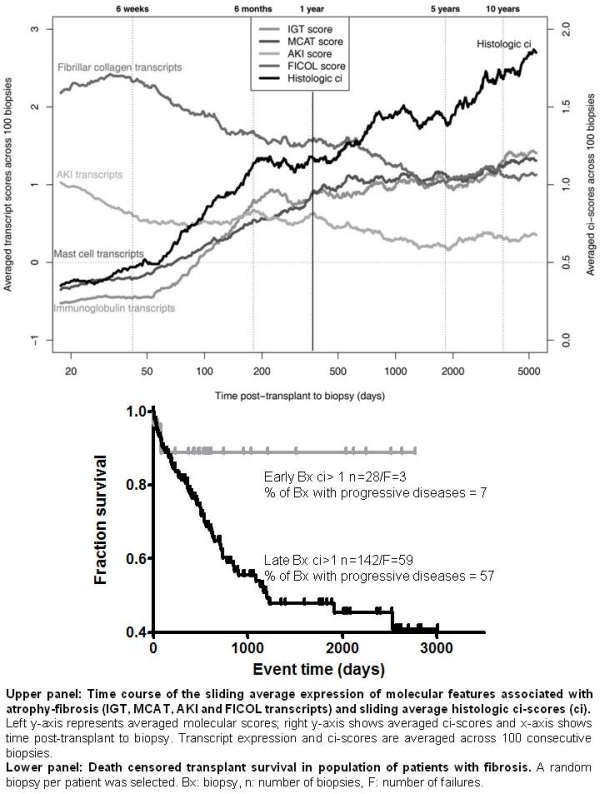Natural History of Response to Wounding in Human Kidney Transplants.
1University of Alberta, Edmonton, AB, Canada
2University of Queensland, Brisbane, Queensland, Australia.
Meeting: 2016 American Transplant Congress
Abstract number: 315
Keywords: Fibrosis, Gene expression, Graft failure
Session Information
Session Name: Concurrent Session: Kidney Transplant Recipient: Long Term Outcomes Session I
Session Type: Concurrent Session
Date: Monday, June 13, 2016
Session Time: 4:30pm-6:00pm
 Presentation Time: 5:18pm-5:30pm
Presentation Time: 5:18pm-5:30pm
Location: Veterans Auditorium
In both primary kidney diseases and kidney transplants, the extent of fibrosis is a key indicator of stage, progression, and prognosis. Much debate focuses, however, on whether fibrosis in kidney transplants and chronic kidney disease (CKD) is a maladaptive mechanism of progression or an adaptive response to wounding Kidney transplant biopsies offer an opportunity to understand the pathogenesis of organ fibrosis in relation to the time of biopsy post-transplant (TxBx).
We studied the relationships among TxBx, histologic fibrosis, diseases, and transcript expression measured by microarrays in 681 indication biopsies taken either early (n=282, <1 year) or late post-transplant (n=399, >1 year). Fibrosis was absent at transplantation but was present in some early biopsies by four months TxBx as a self-limited response to donation-implantation injury, and was not associated with progression to failure. The molecular phenotype of early biopsies represented the time sequence of the response-to-wounding: immediate expression of acute kidney injury transcripts, followed by fibrillar collagen transcripts after several weeks, then by the appearance of immunoglobulin and mast cell transcripts after several months as fibrosis appeared. 
Fibrosis in late biopsies had different associations, because it reflected new injury from progressive diseases (antibody mediated rejection, transplant glomerulopathy, mixed rejection and glomerulonephritis) with high risk of progression to failure. Fibrosis in late biopsies correlated with injury (r=0.49), fibrillar collagen (r=0.34), immunoglobulin (r=0.33), and mast cell (0.43) transcripts but these were independent of TxBx, probably because ongoing injury telescoped the response-to-wounding time sequence. Pathway analysis revealed epithelial response-to-wounding pathways such as Wnt/beta-catenin. The results indicate that fibrosis in kidney transplants reflects the response to wounding and nephron loss, but progression to failure reflects continuing injury, not autonomous fibrogenesis.
CITATION INFORMATION: Famulski K, Venner J, Reeve J, Halloran P. Natural History of Response to Wounding in Human Kidney Transplants. Am J Transplant. 2016;16 (suppl 3).
To cite this abstract in AMA style:
Famulski K, Venner J, Reeve J, Halloran P. Natural History of Response to Wounding in Human Kidney Transplants. [abstract]. Am J Transplant. 2016; 16 (suppl 3). https://atcmeetingabstracts.com/abstract/natural-history-of-response-to-wounding-in-human-kidney-transplants/. Accessed December 14, 2025.« Back to 2016 American Transplant Congress
